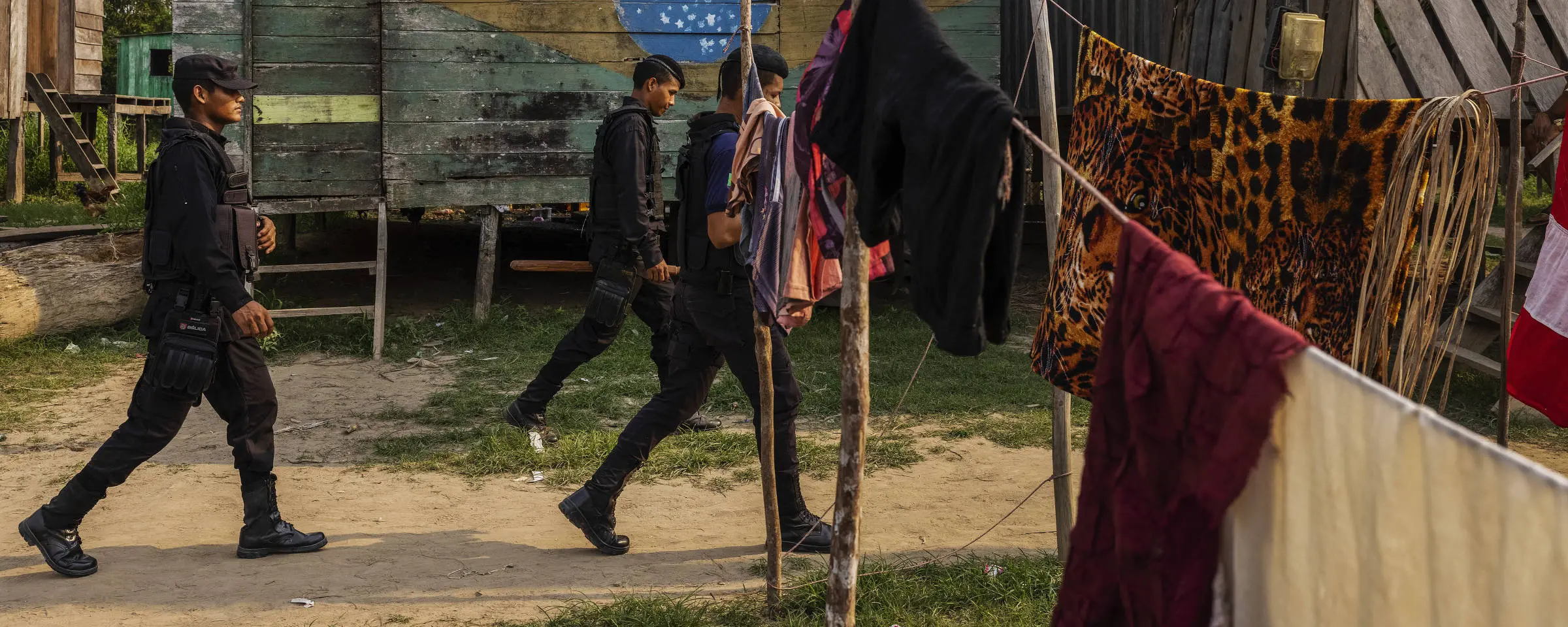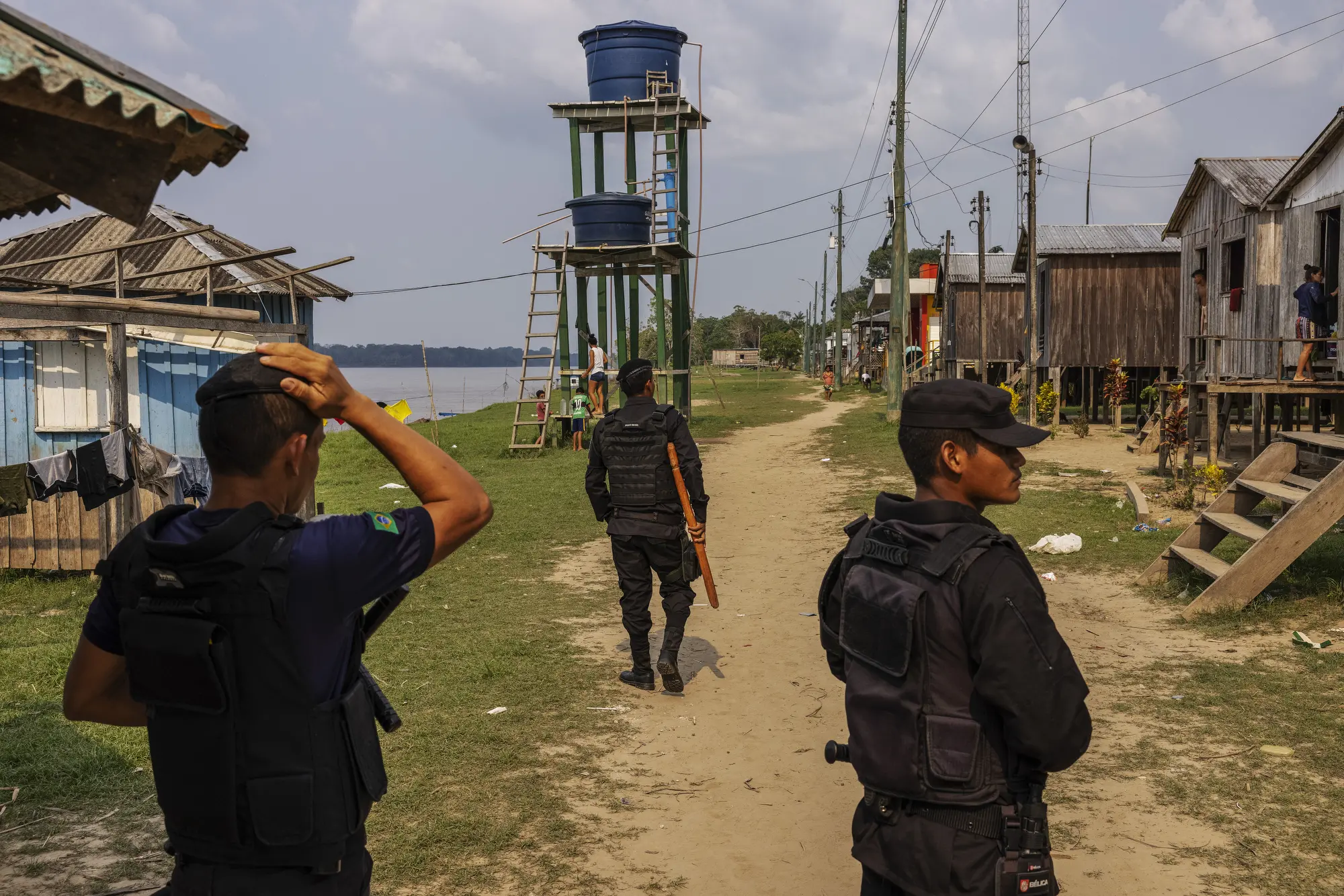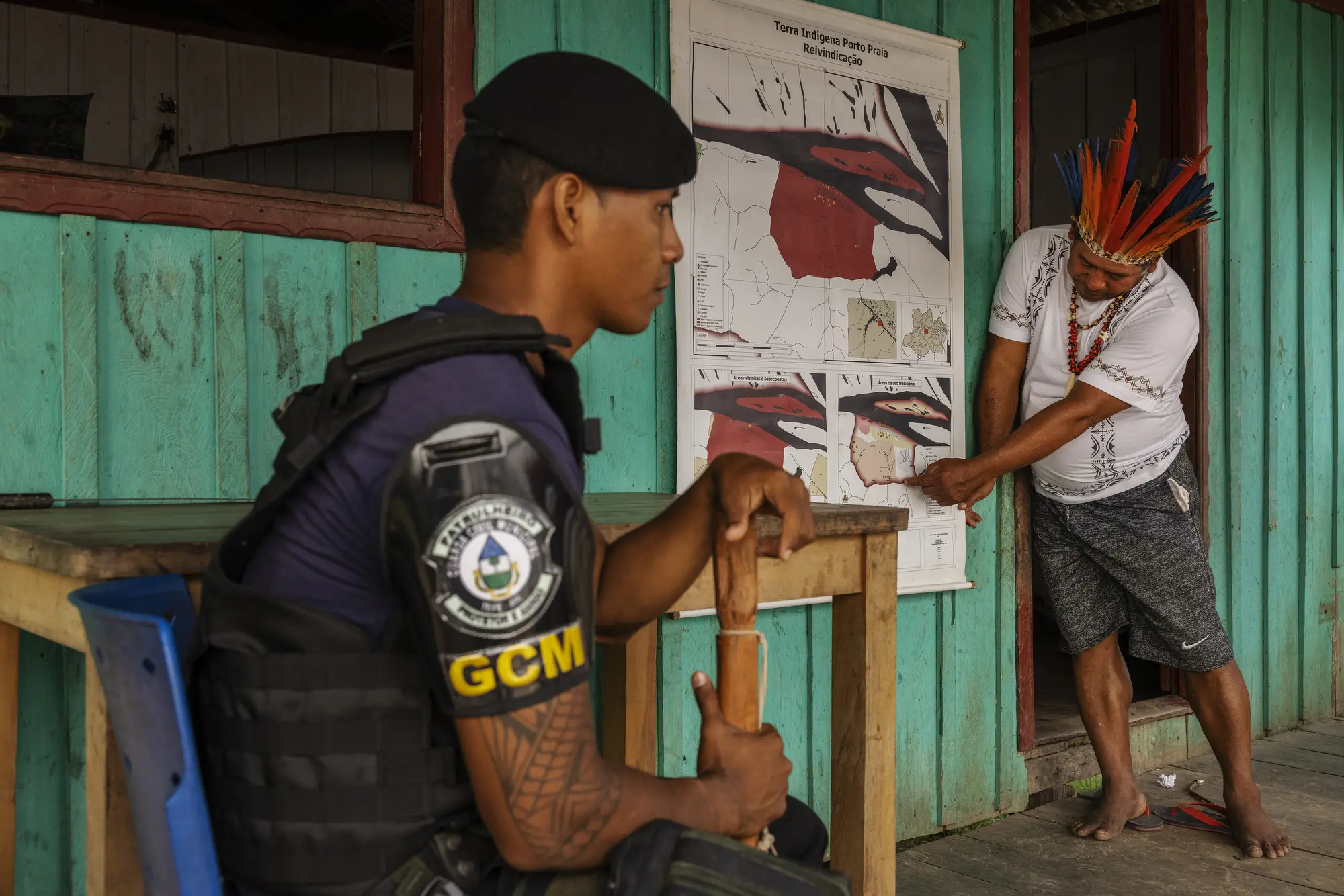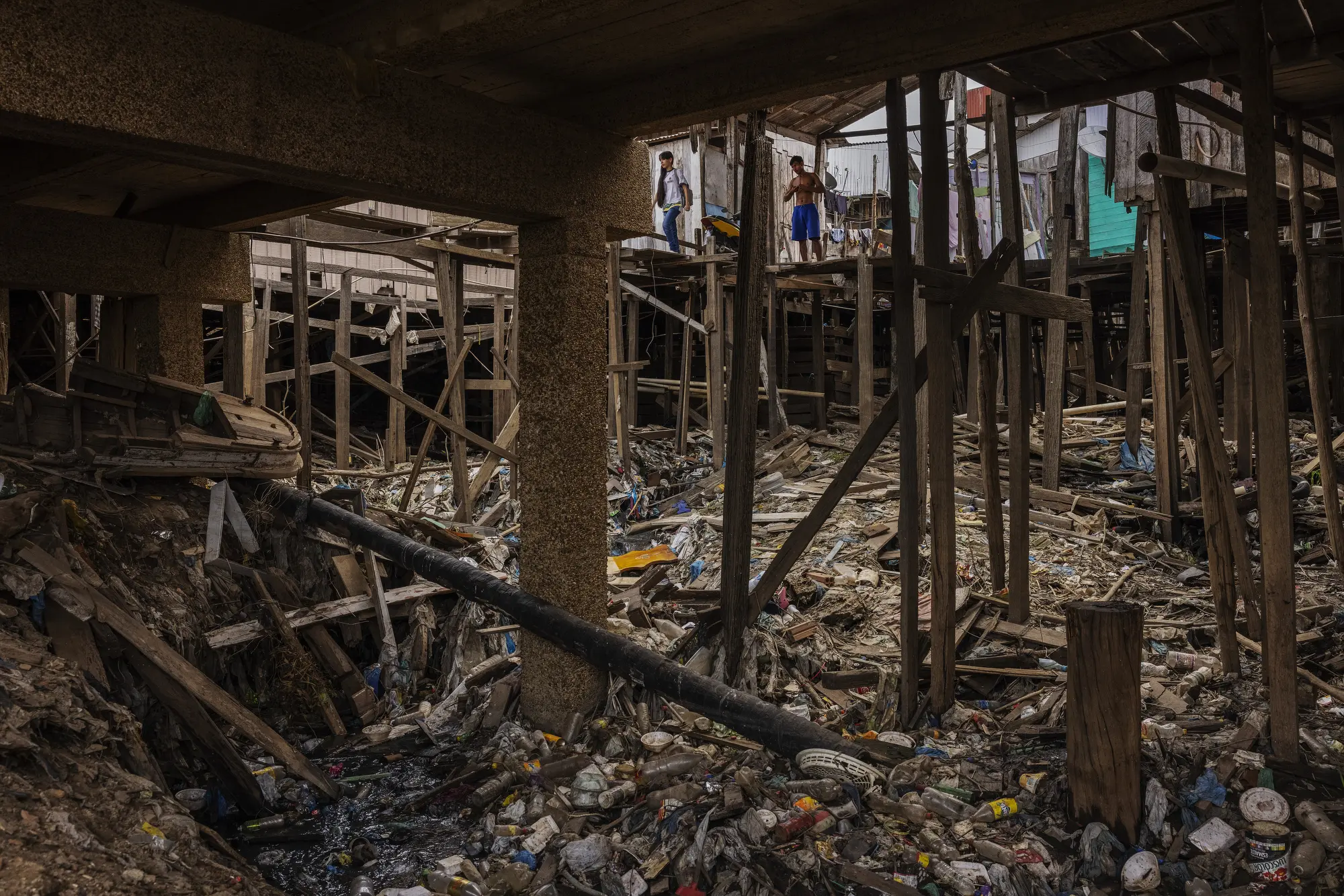This story excerpt was translated from Portuguese. To read the original story in full, visit Folha de São Paulo. You may also view the original story on the Rainforest Journalism Fund website here. The RJF website is available in English, Spanish, bahasa Indonesia, French, and Portuguese.

Increasingly frequent invasions by loggers, fishermen, and sand extractors prompt creation of forest rangers.
Tefé, Amazonas, Brazil - Kokamas, Tikunas, and Mayorunas from the Indigenous land Porto Praia de Baixo, on the banks of the Solimões River, went into the forest and marked 20 trees with a message written in red ink.
"Indigenous Land Porto Praia. Prohibited entry of unauthorized persons, logging and illegal hunting." The message is followed by references to two legal devices: law No. 6,001 of 1973, i.e., the Statute of the Indian, and article 231 of the 1988 Federal Constitution.
Both devices deal with the demarcation of indigenous lands. With that gesture, in 2021, the Indigenous guards were making a self-demarcation of the territory, inspired by leaders from other regions in the Amazon.

"You know that [President Jair] Bolsonaro says he will not demarcate even one centimeter. Let's get organized," advised the chief Amilton Braz da Silva Kokama, 51, articulator of self-demarcation.
The gesture does not alter the progress of the request for demarcation. The indigenous land does not even appear in the database of Funai (National Indian Foundation) for territories whose delimitation processes are under study. At Cimi (Indigenous Missionary Council), the annotation about the claim is: no action.
The self-demarcation, in fact, made by the Indigenous people to try to protect themselves and their territory from increasingly frequent invaders, especially loggers, fishermen, and sand extractors. To this end, a forest guard, made up of eight Indigenous guards, who make daily rounds into the forest, was formed.













